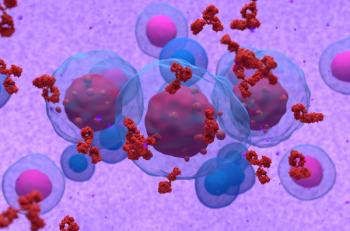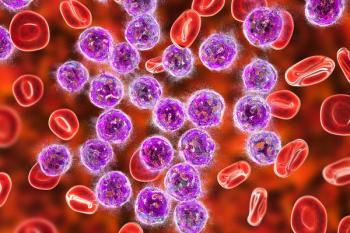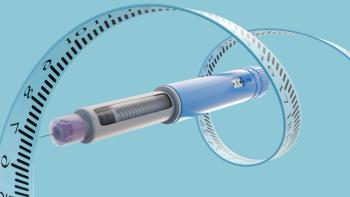
Options for Immunoglobulin Administration Allow for Personalized Treatment of Chronic Inflammatory Demyelinating Polyneuropathy
Although there is no “best” way to determine which route of administration is best, health care providers are optimally positioned to educate patients and help them make the best decision.
With intravenous immunoglobulin (IVIG) and subcutaneous immunoglobulin (SCIG) available for patients with chronic inflammatory demyelinating polyneuropathy (CIDP), researchers have identified a need for information to assist clinicians and patients in choosing the optimal approach.
An article recently published in the Journal of the Neurological Sciences outlined considerations for pharmacokinetics, administration procedures, adverse events, patient variables, and cost.
CIDP is an acquired neurological condition characterized by weakness and impaired sensory function evolving over 2 months or more, loss or decrease in deep tendon reflexes, and by electrophysiological evidence of peripheral nerve demyelination. Efficient diagnosis and treatment early in the course of disease is essential to avoid irreversible disability.
IVIG is utilized both as a first-line and as a maintenance therapy option for patients with CIDP. Other first-line treatments with proven efficacy include corticosteroids and plasmapheresis. In addition, the FDA approved SCIG in 2018 for patients with CIDP, opening up new treatment options for maintenance therapy. However, researchers have identified a need for more information about the differences between IVIG and SCIG.
The efficacy of IVIG was established in 5 randomized, placebo-controlled trials conducted between 1993 and 2008. Based on these trials, clinicians have high quality evidence that IVIG is safe and effective for CIDP induction and maintenance treatment. In particular, the ICE study found that patients receiving IVIG reported significant improvements in the physical functioning, role-physical, social functioning, and mental health domains of a quality-of-life assessment.
The efficacy and safety of SCIG as maintenance therapy was established in the Polyneuropathy and Treatment with Hizentra (PATH) study of 172 IVIG-dependent patients with CIDP. Participants were randomly assigned to receive SCIG 0.2 g/kg per week, which is 40% lower than the IVIG trial, or 0.4 g/kg per week, which is 20% higher than the IVIG trial, or placebo for 24 weeks.
The primary outcome was the proportion of patients who relapsed or withdrew from the study for any reason during the 24-week treatment period. Those who relapsed during SC therapy were rescued with IVIG and discontinued.
In the placebo arm, 63% of patients relapsed or withdrew from the study, compared to 39% in the low-dose group and 33% in the high-dose group. When only relapse was considered, 56% of patients treated with placebo relapsed in the 24-week period, compared to 33% of low-dose and 19% of high-dose treated patients.
Among patients receiving SCIG therapy, 53% stated a preference for SCIG compared to 39% of patients in the placebo group. Reasons for this preference included increased independence and fewer adverse effects (AEs). Eighteen percent of patients receiving SCIG said that they preferred their previous IVIG treatment.
Considering pharmacokinetics, AE profiles, site of care, patient preference variables, and economics is also important.
After an IVIG infusion, the concentration of immunoglobulin G (IgG) peaks within minutes and falls by approximately half over the next 2 to 3 days. Following this rapid equilibration, IgG is catabolized with first-order kinetics and a half-life of 21 to 30 days.
Importantly, the optimal pharmacokinetic parameters for the treatment of CIDP are unknown. Although pharmacokinetic parameters are important considerations for optimizing the efficacy of immunoglobulin, the authors said there are still many questions.
The key principle in pharmacokinetics is that the dose and treatment intervals required to achieve and maintain any given clinical response vary greatly between individuals. Identifying those differences may help clinicians take advantage of differences between SCIG and IVIG pharmacokinetics.
The most common systemic IVIG AEs are headaches and nausea. Many IVIG AEs can be managed with adequate hydration and medications, such as antihistamines, acetaminophen, and corticosteroids, as well as slowing the infusion rate or switching to a different IVIG preparation. Systemic AEs of SCIG are similar, although the frequency and severity with SCIG infusions are generally fewer than with IVIG.
Because SCIG requires no IV access, patients with difficult IV access may be good candidates for SCIG. The most common AE reported that is unique to SCIG is local infusion site reactions, such as redness, itching, or swelling.
Currently, patients with CIDP can receive immunoglobulin therapy in a hospital clinic, physician’s office, a free-standing infusion clinic, or at home. Although IVIG is overseen by a nurse, most SCIG maintenance regimens can be administered by the patient or caregiver without the need for other medical support staff. Patients can travel with their SCIG, removing the need to be near an infusion center or other facility at a fixed interval.
Surveys have also found that patients enjoy the convenience, autonomy, and at-home administration associated with SCIG. However, handling needles and medical equipment weekly without the support of a trained health care professional may be limiting for some patients, particularly those with upper limb disability.
Finally, the authors noted that the economics of IVIG versus SCIG for CDIP are not well understood. A hypothetical cost analysis showed that the low-dose SCIG regimen resulted in a $900 cost savings compared to the IVIG regimen ($8248 versus $9131 over 3 weeks). However, when the high-dose SCIG regimen is required, the costs to the payer would nearly double. These findings are also consistent with findings from European analyses, demonstrating that the cost of the immunoglobulin formulation is often the primary driver of the overall cost of CIDP treatment, according to the study.
With all of these considerations in mind, the authors emphasized the need to consider patients’ individual needs and preferences. The decision to use either SCIG or IVIG should be tailored to patient disease characteristics, treatment goals, and lifestyle. Although there is no “best” way to determine which route of administration is best, health care providers are optimally positioned to educate patients and help them make the best decision.
REFERENCE
Allen JA, Gelinas DF, Freimer M, Runken MC, and Wolfe GI. Immunoglobulin administration for the treatment of CIDP: IVIG or SCIG? Journal of the Neurological Sciences; November 9, 2019. Accessed September 13, 2022.
Newsletter
Stay informed on drug updates, treatment guidelines, and pharmacy practice trends—subscribe to Pharmacy Times for weekly clinical insights.

















































































































































































































